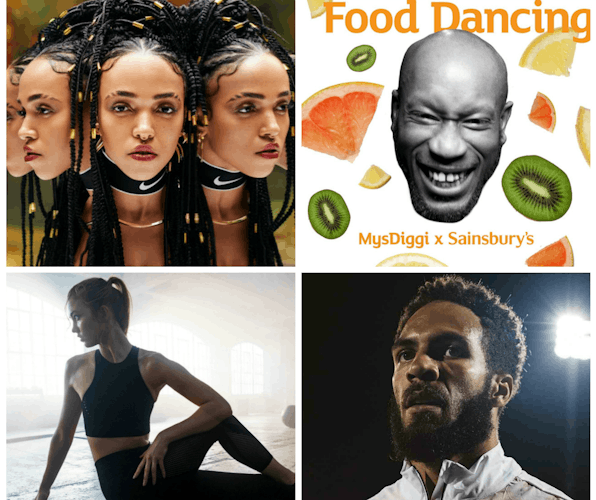Is Nike’s ‘Breaking2’ marathon bid more than just a marketing stunt?
Nike’s #Breaking2 campaign, which saw it attempt to break the two-hour barrier for running a full marathon, could be a glimpse into the future of sports marketing as brands look to make product launches into must-watch events.
https://www.youtube.com/watch?v=RARWIHW0jac
Last Saturday (6 May) Nike enlisted three of the athletes it sponsors – Lelisa Desisa, Eliud Kipchoge and Zersenay Tadese – to attempt something ambitious; break the two-hour barrier for a full marathon run.
Prior to Nike’s attempt the fastest marathon time ever recorded was 2:02:57 by Kenyan runner Dennis Kipruto Kimetto in Berlin back in 2014. Shaving another three minutes off that would be a big achievement; it took 16 years to shave off the previous three minutes.
However, Nike’s athletes were not playing on a level playing field. Each of the runners were wearing a customised version of Nike’s new racing shoe the Zoom Vaporfly Elite, which Nike claims can reduce the energy needed by 4%. They also used a rota of pacers and a hydration strategy aimed at shaving split seconds off the time.
To break the barrier even under these circumstances would have been a big achievement, and of course provided some great PR for the brand.
Taking place at the Monza F1 track in Italy, it was live-streamed on social media with the aim of promoting both the shoe and the record attempt. While Kipchoge did not beat the record, he managed an astonishing time of 2:00:25, coming with in a whisker of breaking the barrier and running an impressive 2 minutes and 32 seconds faster than Kimetto’s official record.
But did it pay off? According to media monitoring tool Meltwater, between 6 and 8 May, the #Breaking2 campaign, which was driven by its advertising agency Wieden + Kennedy, generated 84,459 mentions on social media. And since the #Breaking2 attempt was first announced on 1 December 2016, it has been mentioned 140,029 times across Twitter, Instagram and Facebook.
Following Red Bull’s lead
Nike’s #Breaking2 activity looks to have been inspired by Red Bull’s Stratos activity, which saw Austrian skydiver Felix Baumgartner freefall from space in a pressure suit and parachute back in 2014.
“Like the Red Bull stunt, Breaking 2 was all about owning and enabling an attempt on an ‘impossible’ record,” explains Tim Crow, CEO of Synergy Sponsorship.
All of our clients say ‘make me the next Red Bull’ and Nike did something not too dissimilar to Stratos.
Joel Seymour-Hyde, Ocatagon
Crow believes events such as #Breaking2 will also allow Nike to divert some of the negative attention away from athletics; a sport that’s been dogged by doping allegations over recent years.
“Athletics is slowly dying because it is losing the battle for consumers’ attention, particularly among younger consumers, and because of doping, which is destroying the sport’s credibility. It needs to radically innovate and to find anchors to so, and record attempts are a great anchor. I suspect we’ll see more of these types of stunts over the coming years,” he adds.
Making a product launch a must-see event
Where #Breaking2 succeeded most was in turning what could have just been a run-of-the-mill product launch for a shoe into an “unmissable event,” according to Lizzy Pollot, creative director at Havas Sport & Entertainment Cake.
She explains: “Ultimately, it didn’t matter whether or not the sub-two barrier was broken; Nike managed to essentially turn a product launch into a must-see appointment-to-view moment.

“I lost count of the number of my friends in the running community who had set their alarms for the crack of dawn on Saturday to tune in live to watch it, and then of course post about it. How many product launches can you say that about?”
As part of the activity, Nike flew running influencers from around the world to Monza to become behind-the-scenes advocates for the event, with the social media stars live blogging throughout. And although Nike didn’t break the two hours and Kipchoge’s new record wasn’t recognised by the IAAF due to the unique conditions, Joel Seymour-Hyde, SVP of Strategy at Octagon, says this wasn’t the point.
“Above all, it was a great story of human endeavour and pushing boundaries. By calling it ‘impossible’ in the slogan and describing the attempt as a ‘moonshot’, Nike really made viewers believe they were watching a brand really pushing the limits of human performance,” he explains.
“All of our clients say ‘make me the next Red Bull’ and Nike has achieved something not too dissimilar to Stratos with this campaign.”
Re-positioning the Nike brand
Despite the media attention and how close Kipchoe came, the activity will still be seen as a failure if the three variants of the new Zoom Vaporfly Elite shoe don’t sell in major numbers by capitalising on #Breaking2 buzz. “Nike wants to sell shoes above anything else, so if it doesn’t shift them in big numbers then they will have seen the campaign as a waste of time,” says Seymour-Hyde.
But with direct rival Adidas tweeting its congratulations to Kipchoge in the aftermath of Nike’s #Breaking2, Havas’s Pollott says the US sports giant has won regardless of shoe sales.
She concludes: “We all know that the battle for attention and sales in the sports world is a fierce one, and that Nike is losing market share. But I don’t think shoe sales matter here – #Breaking2 was about something far bigger than just one product, it was about Nike re-positioning itself as a brand that wants to push the boundaries of what’s humanly possible. It achieved that.”






